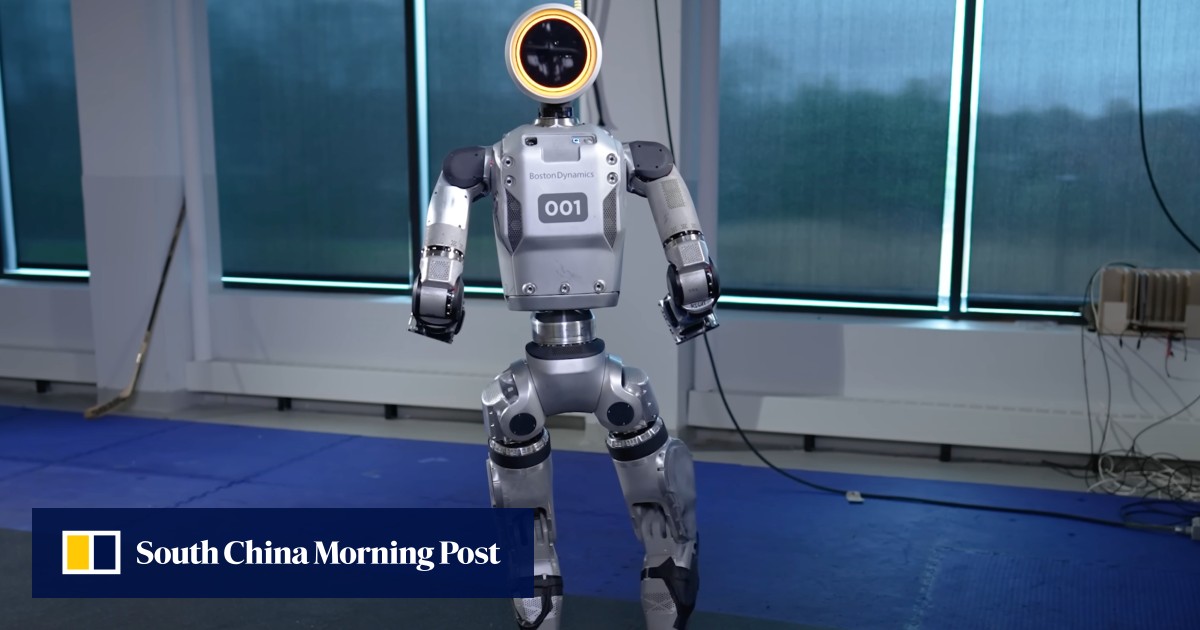


Last Wednesday, US-based firm Boston Dynamics released a video declaring that its hydraulic humanoid robot “Atlas” would be decommissioned. Known for its humanlike agility, and occasionally successful acrobatics, Atlas had captivated audiences worldwide.
China sees rise of humanoid robots as ‘disruptive innovation’, economic boon
The next day, the company introduced a new all-electric successor to Atlas, emphasising its “real-world applications”.
While hydraulic robots have greater limb strength, their hydraulic systems are complex and slower to respond. Electric motors are lighter, more flexible, faster and cost less.
The next-generation model – also named Atlas – features individual electric motors at each joint, giving it a wider range of motion that allows it to stand up from a prone position – something hydraulic robots and humans cannot do.
Boston Dynamics’ pivot away from the original hydraulic-powered robot to the new electric version marks a shift towards strategies Chinese companies have been pursuing for years.
Last month, the Hangzhou-based company released a video of its electric humanoid robot “H1” performing a backflip.
According to Unitree’s website, the H1’s electric drive system “provides unmatched speed, strength, mobility and flexibility in its class” and can run at up to 11.9km/h (7.4mph), making the robot the “fastest in the world”.
At the 2023 International Humanoid Locomotion Competition, held during the International IEEE Humanoid Conference 2023 in Austin, Texas, Unitree’s H1 clinched first place in the obstacle course and second in the freestyle walk, outperforming rivals like Apptronik’s Apollo from the US, and PAL Robotics’ Kangaroo from Spain.
Boston Dynamics has been a major player in humanoid robotics for more than a decade. Their products have excelled at handling a variety of heavy, irregular objects, and they continue to set the industry standards for hardware performance.
Japan is still a leader in production of the best motors and mechanical parts, but it is losing market share.
Robot-mimicking China restaurant boss waits on tables, becomes online hit
As of 2023, China ranked first in the world, both in the number of humanoid robot patent applications and the number of valid patents, surpassing Japan, according to People’s Daily Online Research Institute, which cited statistics from a November 2023 Humanoid Robot Technology Patent Analysis Report.
This divergence in technological adoption has also spurred innovation among upstream suppliers. According to Tokyo-based analysis company Patent Result, since 2000, Chinese firms have filed 25,957 lidar-related patents, compared to 18,821 by US companies and 13,939 by Japanese firms.